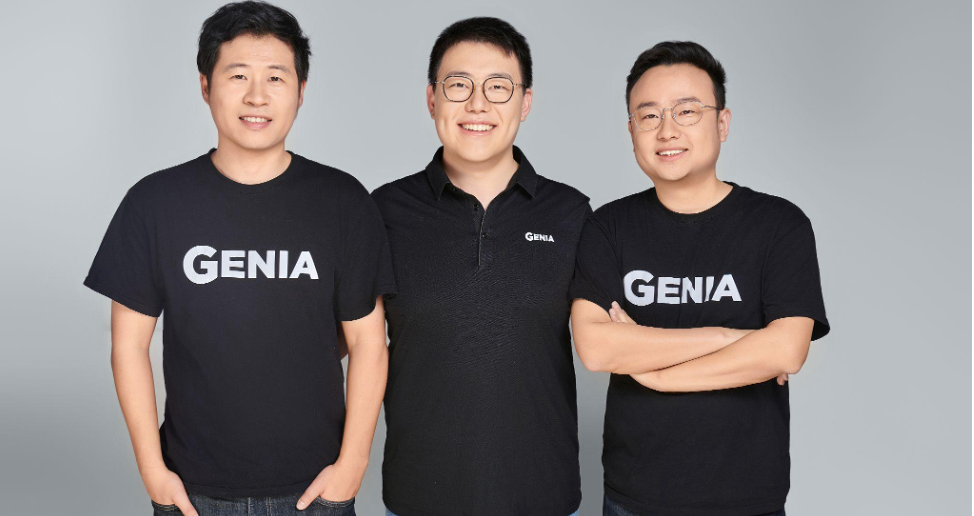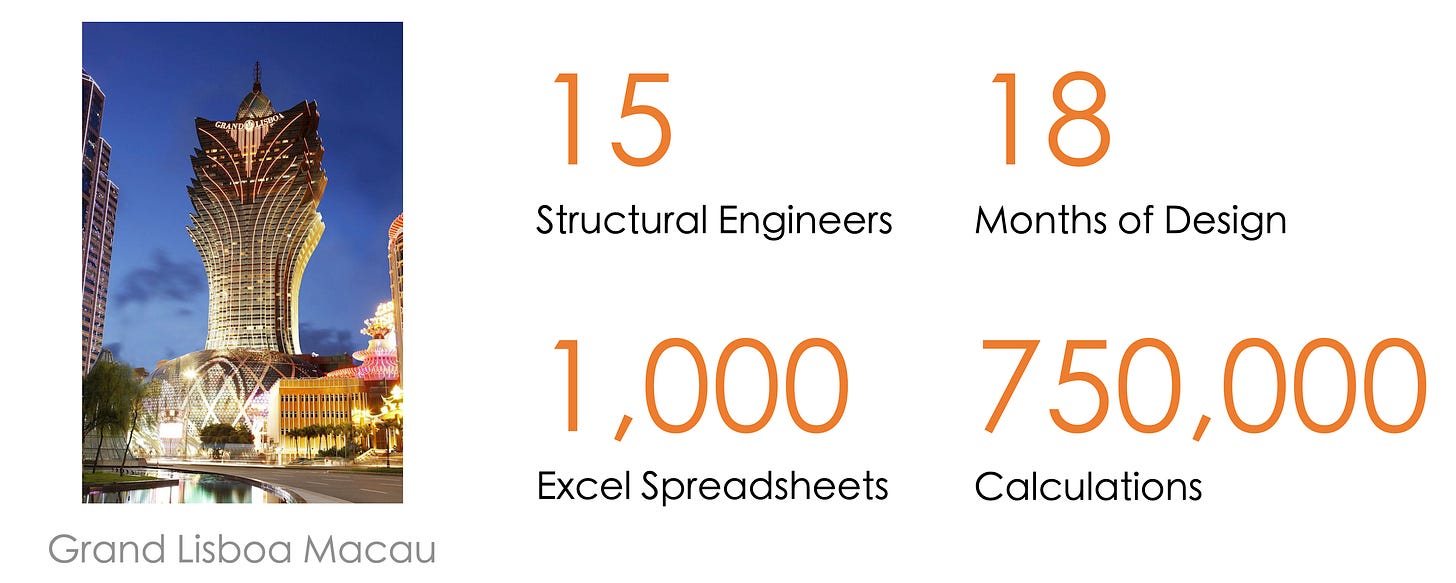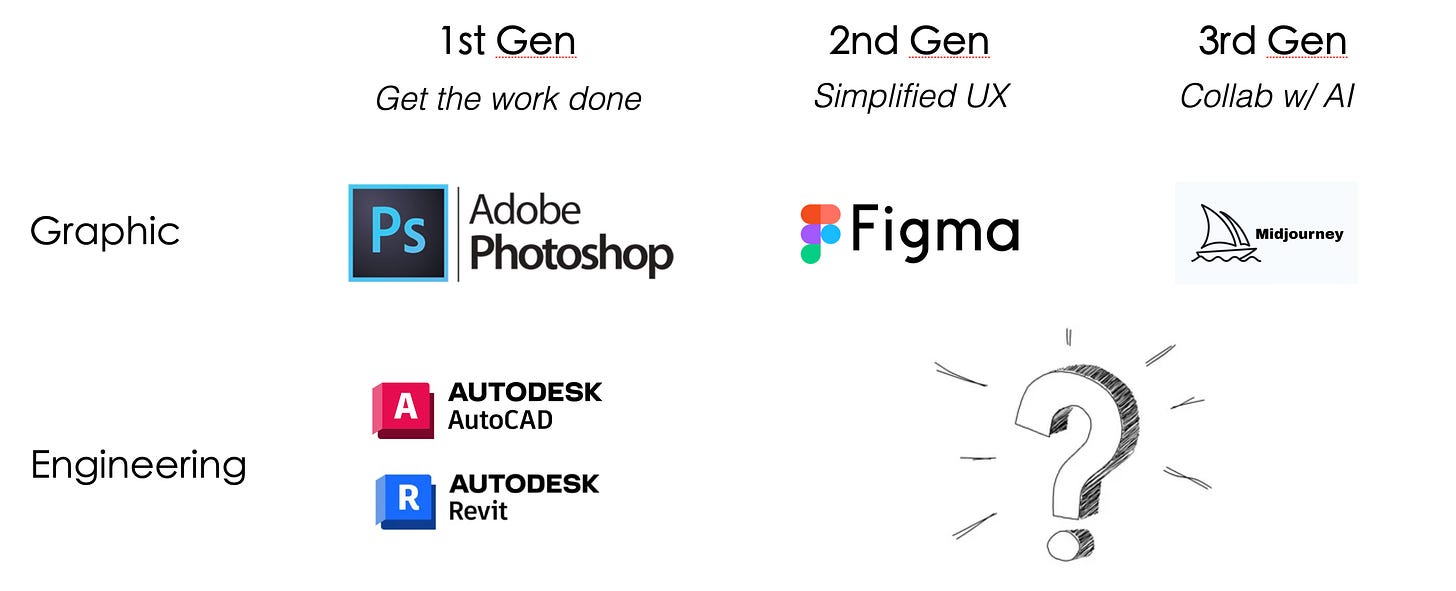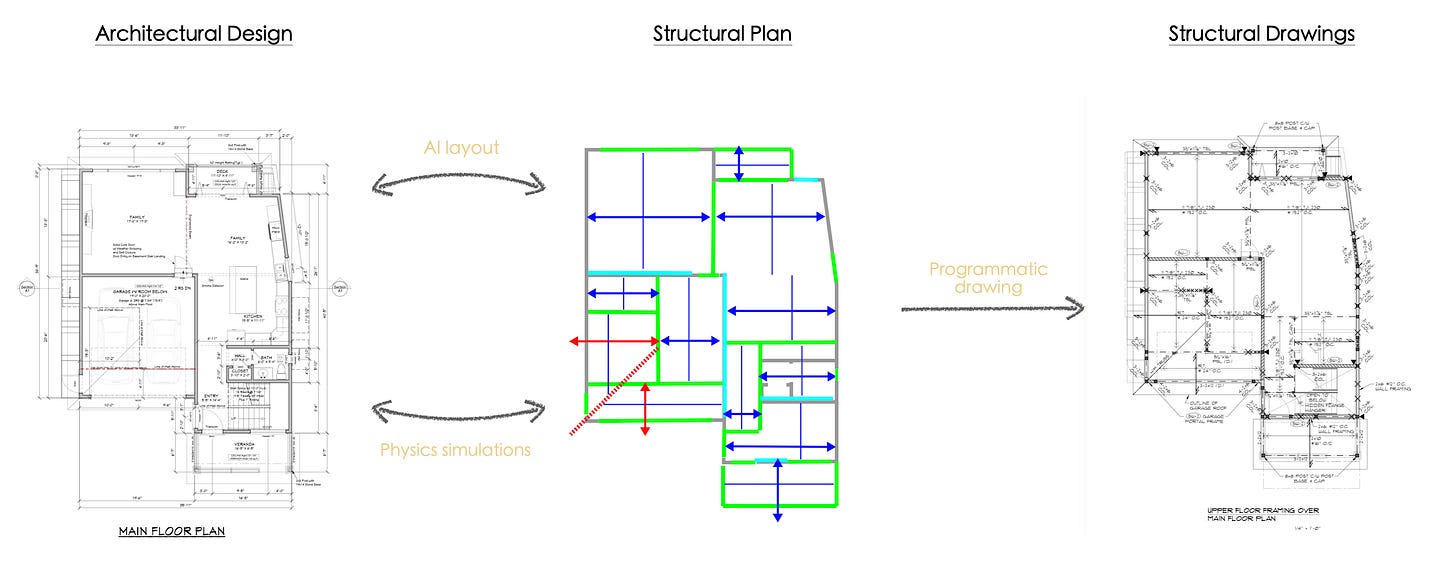Why We Started Genia: From Personal Pain to AI Solution
15 engineers. 18 months. Thousands of spreadsheets. 750,000 manual calculations.
That was the reality for my co-founder, Robin, working on the Grand Lisboa Palace hotel early in his career at ARUP. It highlights the incredible amount of repetitive grind involved in bringing a high-rise structure to life.
He saw the same pattern throughout his career: smart engineers bogged down with endless calculations, drafting and checking, stealing time away from complex problem-solving and innovative design.
This shared frustration is why we started Genia.
When Robin and I met at our previous startup, his stories resonated deeply with me. My background is in product innovation, and construction is a familiar territory.
My dad runs a geotechnical consultancy, and growing up, I saw firsthand the challenges his team faced. They wrestled with the same slow, manual design processes: painstakingly translating field data into logs, manually drafting cross-sections, performing repetitive calculations for slope stability or foundation bearing capacity by hand or in cumbersome spreadsheets, and constantly double-checking everything to avoid errors that could lead to overly conservative designs or worse. It felt like a clear opportunity for a smarter approach, not just in structural, but across engineering disciplines.
The Challenge We All Share
Honestly, Robin's and my dad's experiences aren't isolated, are they?
We invest billions globally in sophisticated analysis software, but let's face it, 60% of our design work is still done manually.
It’s not just slow; it’s stressful. We all know the pressures: tight deadlines, complex coordination, constant checking.
Doing things manually inevitably opens the door for mistakes. And when roughly 40% of drawing submissions are initially rejected because of simple errors? That means real money wasted on delays, blown budgets, and significant frustration for everyone involved.
It’s pretty clear we’re spending too much valuable engineering time on tedious tasks that technology could handle.
So, we started asking: could Generative AI actually help here? Not just automate, but perhaps intelligently generate and validate the repetitive parts, freeing us up for the core engineering challenges?
Validating the Need & Building the Solution
We didn't want to operate on assumptions, so we talked to people. A lot of people. Over 200 folks across the industry – engineers doing the day-to-day work, principals managing teams, developers funding projects, even the reviewers working within city governments checking plans.
The feedback was consistent and clear: yes, this is a real pain point, and yes, better tools are needed. That confirmation gave us the push to actually build Genia.
We brought together a team with deep experience in both structural engineering and AI, plus the know-how to build reliable software. We all strongly believe engineers deserve better tools. This isn't just another venture for us; we committed fully, leaving stable jobs and bootstrapping the company initially because we are serious about solving this problem.

What We Built: The Genia Structural CoPilot
Let’s first begin with an analogy. If we look across graphic design tools, largely we can put them into three generations.
The first generation is represented by Adobe Photoshop, which contains a lot of features to get the work done. Skilled designers can spend hours coming up with an awesome design, but the tool itself requires a steep learning curve.
The second generation is represented by Figma and Canva. These tools are a lot more tailored and streamlined, and users can navigate through their functions pretty easily. While professional designers can still build up great designs, the tools themselves are more approachable to everyday users as well.
Lastly, with the recent development of Generative AI, we’re seeing platforms like Midjourney, where AI does most of the manual work, and human users can give instructions and improve on what AI generates. The main difference here is that human is now doing more of design review and feedback than the actual drawing.
The same framework also holds for engineering design. Three to four decades ago, the industry witnessed the movement to computer-aided design (CAD) and later to building information models (BIM). Yet, both AutoCAD and Revit would be classified as the first generation design tool because of their complex functions and steep learning curve in order to properly navigate.
The engineering design industry does NOT have a second generation tool with simpler UX, let along a third generation AI-native design platform.
And that is why we created Genia Structural CoPilot to be a powerful assistant for structural engineers.
Genia Structural CoPilot takes architectural drawings as input, generated hundreds design options with AI, evaluates structural performance and code compliance of each option, recommends top design options with structural drawings and calculation sheets, and selects the best materials in our catalog to meet the force requirement.
Tasks that usually take weeks or months of drafting can now be generated, ready for your expert review and refinement, in just hours.
But it's not just about speed. The engineers using it already are seeing designs come together up to 10x faster, certainly, but they're also experiencing fewer errors and finding opportunities for more efficient material use, which benefits both the project budget and sustainability goals.
Join Our Journey
Look, we started Genia because we believe in engineers. We want to build tools that handle the necessary but time-consuming tasks so you can focus your skills where they matter most.
We envision a future where technology enhances our jobs, letting us tackle more interesting problems, design more creatively, and build smarter, safer structures.
If you're an engineer feeling these pressures, check out what Genia can do.
We’d love to hear your own experiences and thoughts in the comments, too!







